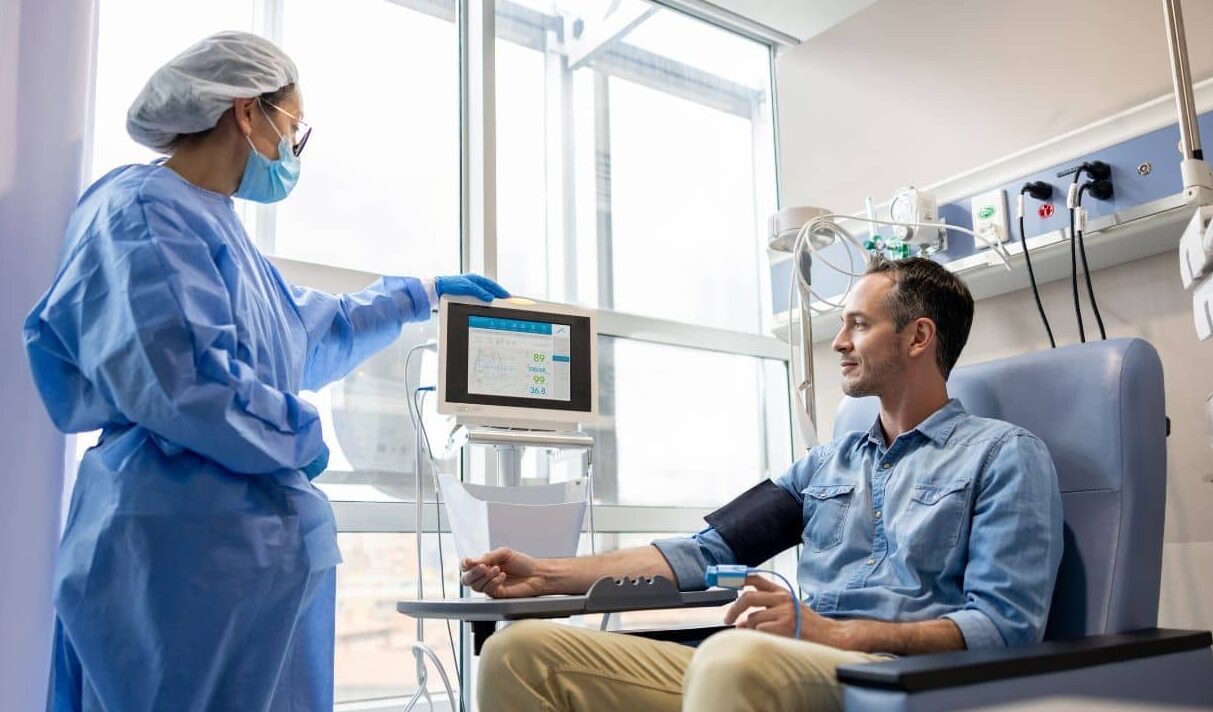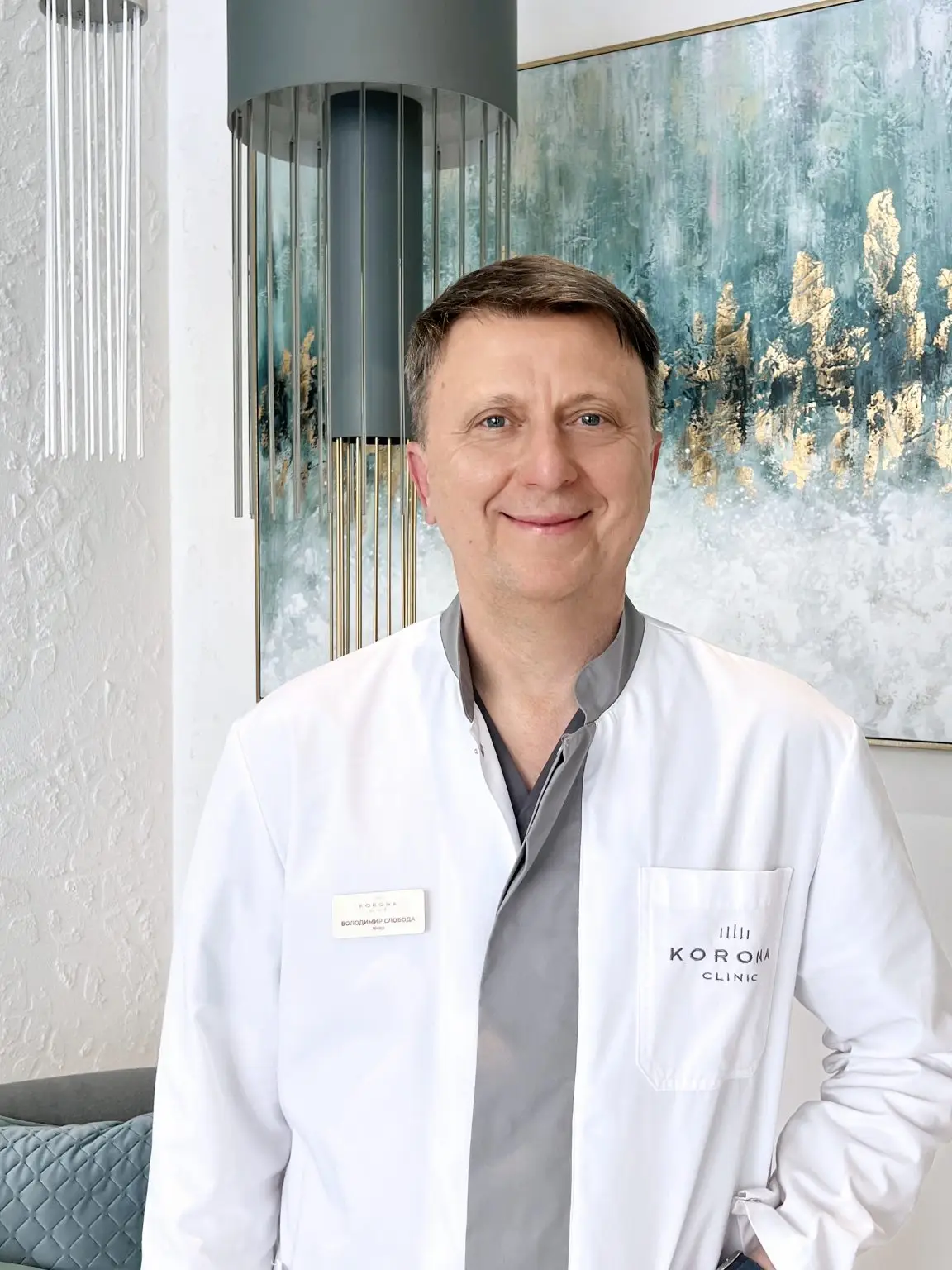-
 News
When glucose levels are low, chemotherapy ceases to affect cancer cells
News
When glucose levels are low, chemotherapy ceases to affect cancer cells
-
 News
Excessive treatment of prostate cancer in older men may reduce quality of life without increasing its duration
News
Excessive treatment of prostate cancer in older men may reduce quality of life without increasing its duration
-
 News
Brain cancer can be cured by viruses
News
Brain cancer can be cured by viruses
-
 News
Ways to reduce lymphatic pain in breast cancer have been found
News
Ways to reduce lymphatic pain in breast cancer have been found
-
 News
Scientists have turned bacteria into a powerful weapon against cancer
News
Scientists have turned bacteria into a powerful weapon against cancer
All news
Cervical Dysplasia treatment
Cervical dysplasia (CD) is most common in women aged 25-35 years.
Dysplasia lesions may regress (shrink or disappear), remain stable, or progress to cancer.
- The disease most often develops when infected with the human papillomavirus,
- Up to 80% of the population is infected with HPV,
- HPV is detected in 95-98% of patients with CD.
Modern diagnostics: colposcopy, PAP test, biopsy.
Innovative methods of treatment: coagulation, cryotherapy, conization of the cervix.
Prevention: HPV vaccinations, checkups with a gynecologist, and lifestyle changes.
MedTour patients recommend clinics for the treatment of cervical dysplasia:
Doctors for the treatment of cervical dysplasia
Patient reviews
I had in vitro fertilization in this center. They did it well. I am really happy to be able to have a kid now! Thanks to MedTour for organizing the whole treatment! It was even not that expensive as I thought.
Frequently Asked Questions
Cervical dysplasia — changes in the structure of cervical epithelial cells.
Pathological changes occur, as a result of which cells mutate, divide and grow uncontrollably.
The most common cause of changes in cervical tissue is infection with the human papillomavirus, or HPV for short.
HPV infection is the starting point for the development of dysplasia. The papillomavirus is sexually transmitted.
- In 90%, the infection is temporary and the virus dies spontaneously,
- In 10% of cases, the infection persists and can damage cells and tissues.
Other reasons for the development of CD: hormonal disorders and weakened immunity.
Risk factors for developing cervical dysplasia:
- Smoking,
- Genital infections,
- Chronic vaginitis,
- A large number of births,
- Genetic predisposition,
- Frequently changing sexual partners,
- Early onset of sexual activity (before the age of 16).
Dysplasia of the cervix is divided into 3 stages:
- Stage 1 — mild dysplasia,
- Stage 2 — moderate lesions of most layers of the tissues of the cervix,
- Stage 3 — severe — pronounced changes, atypical cells are located throughout the entire thickness of the epithelium of the cervix.
The degrees can progress: 1st goes into 2nd, 2nd goes into 3rd. Grade 3 dysplasia is a precancerous condition that can lead to the development of cervical cancer.
Cervical dysplasia usually doesn’t cause symptoms, so it’s important to see your gynecologist regularly.
There are several methods for preventing HPV infection and the development of dysplasia, and later, cervical cancer.
1. Vaccination:
Vaccination should be given before or within a year after the first intercourse.
HPV vaccines reduce the risk of HPV-16/18-associated cervical precancer and reduce the risk of re-infection.
2. Affiliate survey:
HPV is sexually transmitted and affects both women and men. The infection goes unnoticed. Knowing the research results will help you protect yourself.
Condoms do not 100% protect against human papillomavirus infection!
3. Limiting risk factors:
Smoking greatly increases the risk of developing dysplasia.
Visit your gynecologist regularly and carry out timely treatment of diseases.
Avoid promiscuous sex.
Modern methods of diagnosis and treatment of cervical dysplasia
How is cervical dysplasia diagnosed abroad
A qualified doctor will diagnose by the following methods:
- Gynecological examination,
- PAP test — smear for oncocytology,
- Urogenital flora smear,
- Colposcopy,
- Biopsy.
Colposcopy — a method of examining the cervix treated with two solutions under a microscope. Under the influence of one of the solutions, the healthy cervix turns brown. If white spots are present, this indicates the presence of areas of dysplasia.
During the examination, the doctor performs a biopsy (collects tissue samples) to confirm the diagnosis. This is a simple, painless procedure. The samples are sent to a laboratory and examined under a microscope for possible precancerous or cancerous changes in the cells.
How foreign doctors treat cervical dysplasia
Cervical dysplasia can be most effectively treated with early detection.
- Mild dysplasia should be monitored.
If a woman has inflammatory diseases in the vagina or STDs, they are cured and dysplasia can disappear on its own within 1 year in 90% of cases. That is why, according to modern recommendations, grade 1 dysplasia can be observed up to 2 years.
- Therapy of 2 and 3 stages of dysplasia is surgical. When choosing an operation, the patient’s age, the size of the lesions, genetic predisposition, and the desire to have children are taken into account.
Moderate dysplasia is treated with laser coagulation (moxibustion). The method is based on electrosurgical removal of lesions using an electric current. In this case, the cervix is cauterized to prevent bleeding.
Another method is cryotherapy — the destruction of cells by cold (freezing).
For the treatment of severe dysplasia, an experienced doctor of the leading clinic will choose conization of the cervix — the removal of a cone-shaped fragment of the cervical tissue.
Published:
Updated:










Добрый день! Хочу оставить отзыв благодарности .
Дайнис Леонидович, я от чистого сердца благодарю Вас, за такую непростую в моем случае операцию, и то, как легко и быстро все прошло! Сегодня второй день после операции и я чувствую себя хорошо не только физически, но и психологически! Все прошло на столько комфортно, что я практически не переживала. В целом людям свойственно волноваться перед операцией, но с Вашей командой, анестезиологов, мед персонала я чувствовала что все под чутким контролем!! Я желаю всем здоровья!